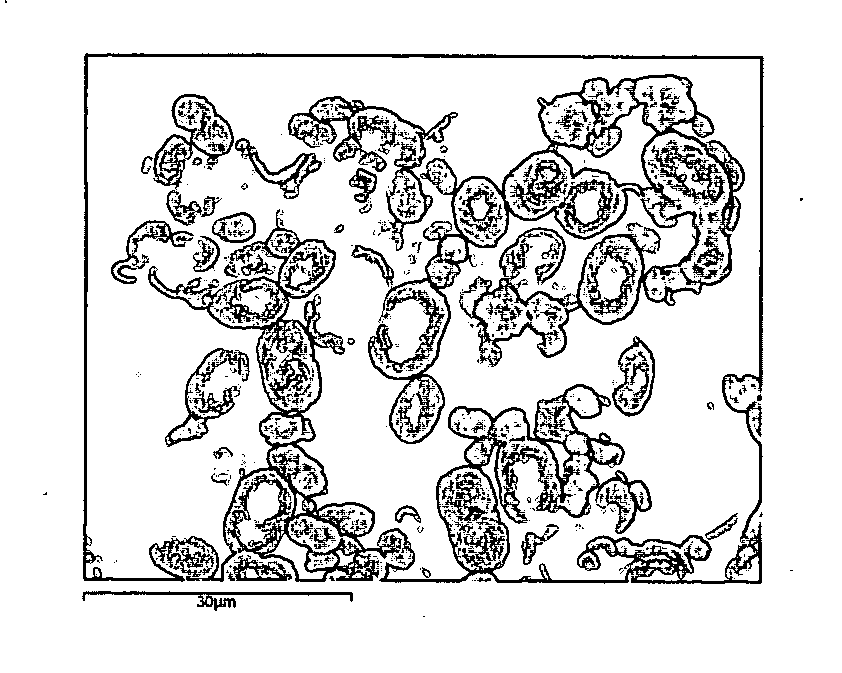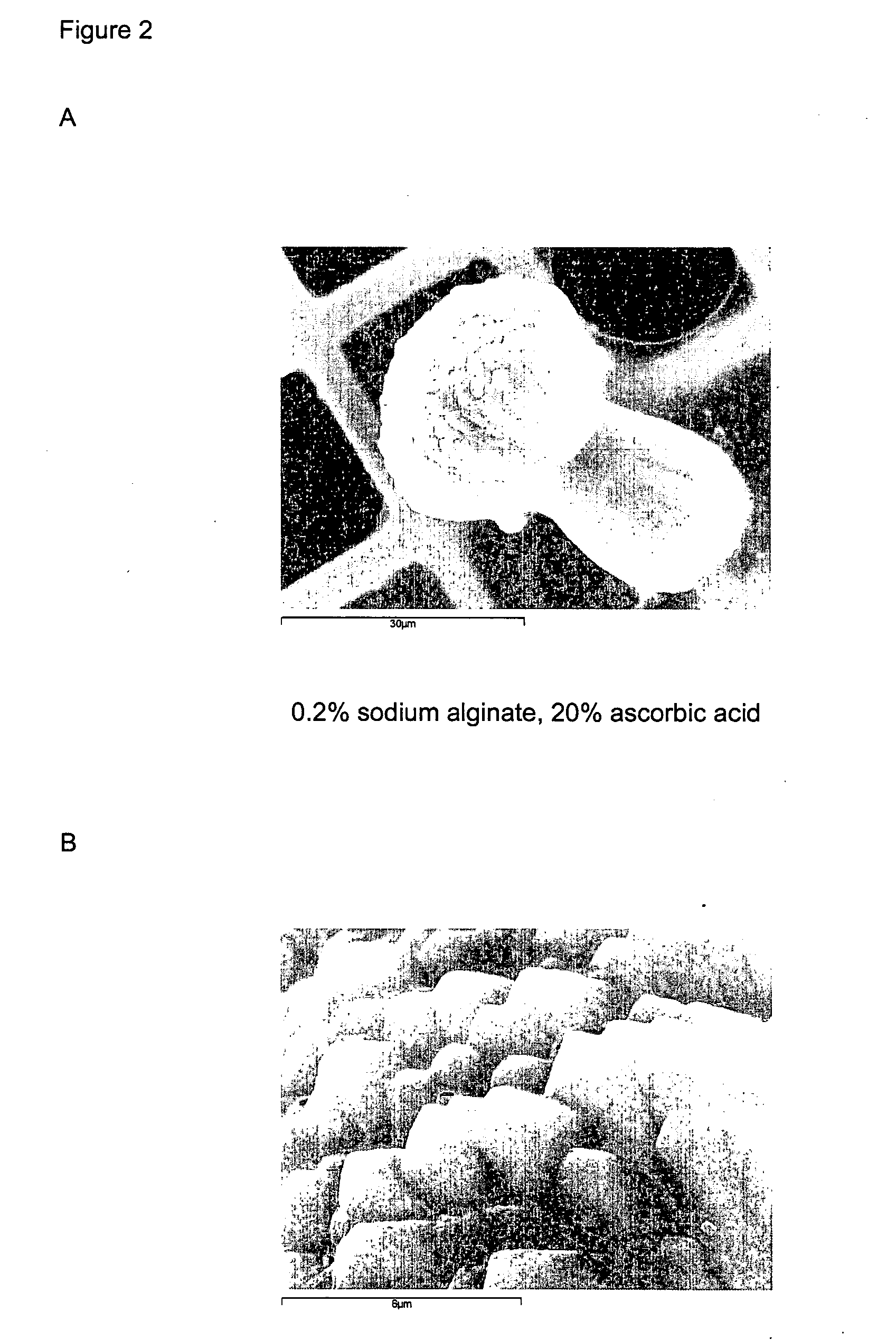Method of growing crystals
a crystal growth and crystal technology, applied in the field of crystal growth methods, can solve the problems of loss of active substances, unpalatable orally administered active substances, pharmaceutical drugs and nutritional supplements,
- Summary
- Abstract
- Description
- Claims
- Application Information
AI Technical Summary
Benefits of technology
Problems solved by technology
Method used
Image
Examples
example 1
[0063] 5 ml of 0.01 M calcium chloride (CaCl2) solution was added to 5 ml 0.2% (w / w) biopolymer solution in 0.02 M sodium bicarbonate (NaHCO3) whilst being stirred using a magnetic follower. Biopolymers used include low methoxy pectin, high methoxy pectin, kappa-carrageenan and sodium alginate.
[0064] The ions present in solution immediately gel or thicken the biopolymer. Calcium ions gel pectin and alginate whereas sodium ions gel kappa-carrageenan.
[0065] The pH was increased to 10.5 using 1 M sodium hydroxide (NaOH). This induces supersaturation of calcium carbonate (CaCO3) and leads to the nucleation of calcium carbonate, after a time delay of up to several tens of minutes, on the biopolymer gel previously formed. A crystalline shell composed of many distinct crystals of CaCO3 is thereby grown on the gel template. The nucleation rate and growth rate of CaCO3, and therefore the thickness of the crystalline shell, is moderated by the biopolymer and the relative concentrations of t...
example 2
[0067] 5 ml of 0.01 M calcium chloride, (CaCl2) solution was added to 5 ml 0.2% (w / w) sodium alginate and 20% (w / w) ascorbic acid solution in 0.02 M sodium bicarbonate (NaHCO3) whilst being stirred using a magnetic follower. The ions present in solution immediately gelled the sodium alginate.
[0068] The pH was increased to 10.5 using 1 M sodium hydroxide (NaOH). This induces supersaturation of calcium carbonate (CaCO3) and leads to the nucleation of calcium carbonate, after a time delay of up to several tens of minutes, on the biopolymer gel previously formed. A crystalline shell composed of many distinct crystals of CaCO3 is thereby grown on the gel template. The crystal morphology of the CaCO3 shell was determined by the nucleation of crystals on the sodium alginate template and the growth modification effect of the ascorbic acid in solution, leading to long CaCO3 crystals with an octahedral tip being grown from the alginate particles.
[0069] The samples were left a minimum of thr...
example 3
Substance of Interest as the Substrate
An Optimised Procedure is as Follows:
[0073] Make a metastably saturated solution of the substance(s) of interest, the substance(s) of interest being of sufficient polarity to complex with the cation or anion of the added salt to form a crystal, e.g. having hydroxyl groups and ester groups to complex with Ca2+. [0074] Remove oxygen from all fluids and equipment and add soluble antioxidant to the solvent and holding solution. [0075] To the solution with the substance of interest in it, during stirring, add a highly supersaturated solution of ions of the salt intended to provide the encapsulating continuous layer. [0076] Keep the entire process in a pH and chemical window where precipitated salts are insoluble and the ingredients do not degrade. Remove the precipitate from the solvent, repeatedly wash and agitate to remove inter-particle chemicals. [0077] Store the precipitate in conditions where the salt is highly insoluble and the active is no...
PUM
| Property | Measurement | Unit |
|---|---|---|
| pH | aaaaa | aaaaa |
| density | aaaaa | aaaaa |
| lattice | aaaaa | aaaaa |
Abstract
Description
Claims
Application Information
 Login to View More
Login to View More - R&D
- Intellectual Property
- Life Sciences
- Materials
- Tech Scout
- Unparalleled Data Quality
- Higher Quality Content
- 60% Fewer Hallucinations
Browse by: Latest US Patents, China's latest patents, Technical Efficacy Thesaurus, Application Domain, Technology Topic, Popular Technical Reports.
© 2025 PatSnap. All rights reserved.Legal|Privacy policy|Modern Slavery Act Transparency Statement|Sitemap|About US| Contact US: help@patsnap.com



